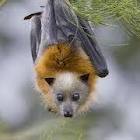 According to a recent report from the Centers for Disease Control and Prevention (CDC), a new influenza A virus, recently discovered in fruit bats in Guatemala, does not appear to pose a current threat to humans. The CDC continues, however, to say that the Bat Flu virus should be studied as a potential source for human influenza.
According to a recent report from the Centers for Disease Control and Prevention (CDC), a new influenza A virus, recently discovered in fruit bats in Guatemala, does not appear to pose a current threat to humans. The CDC continues, however, to say that the Bat Flu virus should be studied as a potential source for human influenza.
The study was published recently in the journal Proceedings of the National Academy of Sciences and was based on findings from scientists from the CDC working with others at the University of the Valley of Guatemala.
“This is the first time an influenza virus has been identified in bats, but in its current form the virus is not a human health issue,” said Dr. Suxiang Tong, team lead of the Pathogen Discovery Program in CDC’s Division of Viral Diseases and lead author of the study. “The study is important because the research has identified a new animal species that may act as a source of flu viruses.”
In order for the bat flu virus to infect humans, a genetic process known as reassortment would need to occur. This process takes place when more than one influenza virus infects a single host cell. This then allows the viruses to exchange genetic information eventually leading to a new influenza virus in humans. Pandemics of the 20th century, as well as the 2009 H1N1 pandemic, were caused by influenza viruses in animals that underwent a reassortment process and eventually went on to infect and spread to humans.
The early research by the CDC does indicate that the Bat Flu virus genes are compatible with human influenza viruses. “Fortunately, initial laboratory testing suggests the new virus would need to undergo significant changes to become capable of infecting and spreading easily among humans,” said Dr. Ruben Donis, chief of the Molecular Virology and Vaccines Branch in CDC’s Influenza Division and a study co–author. “A different animal – such as a pig, horse or dog –would need to be capable of being infected with both this new bat influenza virus and human influenza viruses for reassortment to occur.”
![Herbal Reference Substances are Key to Everyday Products <!-- AddThis Sharing Buttons above -->
<div class="addthis_toolbox addthis_default_style " addthis:url='http://newstaar.com/herbal-reference-substances-are-key-to-everyday-products/3512112/' >
<a class="addthis_button_facebook_like" fb:like:layout="button_count"></a>
<a class="addthis_button_tweet"></a>
<a class="addthis_button_pinterest_pinit"></a>
<a class="addthis_counter addthis_pill_style"></a>
</div>When it comes to quality control testing and the development of new products, Botanical Reference Materials (BRMs), also known as Herbal References are critically important. To help companies ultimately obtain all-important FDA approval, the Food and Drug Administration provides in its guidance a recommendation that […]<!-- AddThis Sharing Buttons below -->
<div class="addthis_toolbox addthis_default_style addthis_32x32_style" addthis:url='http://newstaar.com/herbal-reference-substances-are-key-to-everyday-products/3512112/' >
<a class="addthis_button_preferred_1"></a>
<a class="addthis_button_preferred_2"></a>
<a class="addthis_button_preferred_3"></a>
<a class="addthis_button_preferred_4"></a>
<a class="addthis_button_compact"></a>
<a class="addthis_counter addthis_bubble_style"></a>
</div>](http://newstaar.com/wp-content/uploads/2021/02/Achillea_millefolium_flowers-100x100.jpg)
![Quality Electrochemical Biosensors are Critical for Medical, Food and Chemical Industry <!-- AddThis Sharing Buttons above -->
<div class="addthis_toolbox addthis_default_style " addthis:url='http://newstaar.com/quality-electrochemical-biosensors-are-critical-for-medical-food-and-chemical-industry/3512086/' >
<a class="addthis_button_facebook_like" fb:like:layout="button_count"></a>
<a class="addthis_button_tweet"></a>
<a class="addthis_button_pinterest_pinit"></a>
<a class="addthis_counter addthis_pill_style"></a>
</div>A number of industries have, at their core, a need to frequent or even continuous analysis of biological media. These include the medical and pharmaceutical fields, biotech firms, and food and chemical companies. To maintain quality standards and develop new products, these industries rely heavily […]<!-- AddThis Sharing Buttons below -->
<div class="addthis_toolbox addthis_default_style addthis_32x32_style" addthis:url='http://newstaar.com/quality-electrochemical-biosensors-are-critical-for-medical-food-and-chemical-industry/3512086/' >
<a class="addthis_button_preferred_1"></a>
<a class="addthis_button_preferred_2"></a>
<a class="addthis_button_preferred_3"></a>
<a class="addthis_button_preferred_4"></a>
<a class="addthis_button_compact"></a>
<a class="addthis_counter addthis_bubble_style"></a>
</div>](http://newstaar.com/wp-content/uploads/2020/10/Electrochemical-Biosensor-100x100.jpg)
![Company Develops Industrial Mixers Well-Suited for both Fragile and Explosive Products <!-- AddThis Sharing Buttons above -->
<div class="addthis_toolbox addthis_default_style " addthis:url='http://newstaar.com/company-develops-industrial-mixers-well-suited-for-both-fragile-and-explosive-products/3512071/' >
<a class="addthis_button_facebook_like" fb:like:layout="button_count"></a>
<a class="addthis_button_tweet"></a>
<a class="addthis_button_pinterest_pinit"></a>
<a class="addthis_counter addthis_pill_style"></a>
</div>Industrial drum mixers are normally applied to blend mixes of varying viscosities such as adhesive slurries or cement. Some of these mixers have the capability of blending mixes of very different particle sizes such as fruit and ice cream, and gravel and cement slurry. The […]<!-- AddThis Sharing Buttons below -->
<div class="addthis_toolbox addthis_default_style addthis_32x32_style" addthis:url='http://newstaar.com/company-develops-industrial-mixers-well-suited-for-both-fragile-and-explosive-products/3512071/' >
<a class="addthis_button_preferred_1"></a>
<a class="addthis_button_preferred_2"></a>
<a class="addthis_button_preferred_3"></a>
<a class="addthis_button_preferred_4"></a>
<a class="addthis_button_compact"></a>
<a class="addthis_counter addthis_bubble_style"></a>
</div>](http://newstaar.com/wp-content/uploads/2020/06/bandeau-sofragir2-100x100.jpg)